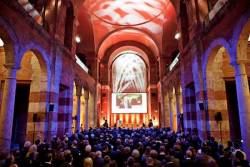7th GNSS Vulnerabilities and Solutions Conference

This annual conference on the Croatian Adriatic aims at GNSS experts and covers the risks and vulnerabilities of the global navigation satellite systems and efforts to improve accuracy and reliability.
It will take place at Baska on the resort island of Krk in Croatia from April 18 to April 20, 2013.
The deadline for abstracts has passed.
Topics include:
By Inside GNSS














